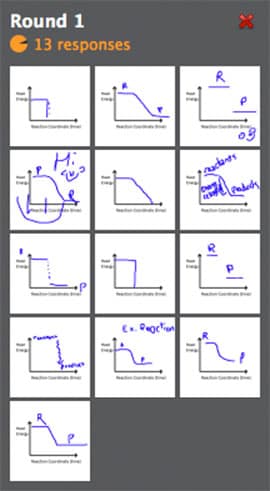Peer instruction at its finest!

Kalée Tock
Teacher, Stanford Online High School
I teach Honors Chemistry and an introductory course called Foundations in Science at Stanford Online High School (OHS). OHS is different from a traditional high school in that classes occur online. Learning Catalytics has been an extremely valuable tool for online instruction at OHS. Learning Catalytics allows me to check understanding quickly and effectively by delivering questions along the way and watching whether I am getting mostly "green" (correct) or "red" (incorrect) answers.
As an online school, we are also particularly vulnerable to tech issues. Recently, I had the most incredible section, despite not being there for most of it. Our classroom software crashed for some of us, leaving us with nothing but Learning Catalytics and email. Only 12 of my 18 students were able to get into my 8:30 AM chemistry section. I emailed everyone to follow along on Learning Catalytics, and sent them solutions to each question after I had delivered it and given them a chance to respond. It was bizarre without audio or video, but I noticed that I was getting a much higher percent correct than usual. Finally, about 15 minutes before the end of class, I was able to enter the session, along with the other 6 students. What I found was incredible: my students had been actively discussing the questions as I delivered them, and helping each other understand the solutions. Peer instruction at its finest!
The lesson for me that came out of this strange yet productive class was first and foremost that I have incredible students and that I am privileged to be their instructor. But not far behind that, revelation-wise, was that maybe I need to get out of the way a little more and let my students learn.
Study after study has shown that teachers talk too much: really active learning involves less listening, and more doing. Learning Catalytics has been a great tool for helping me to facilitate that in my class.
